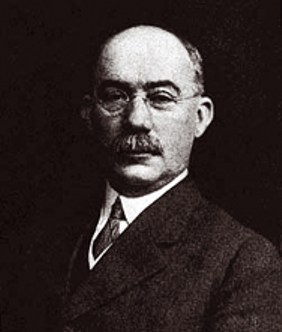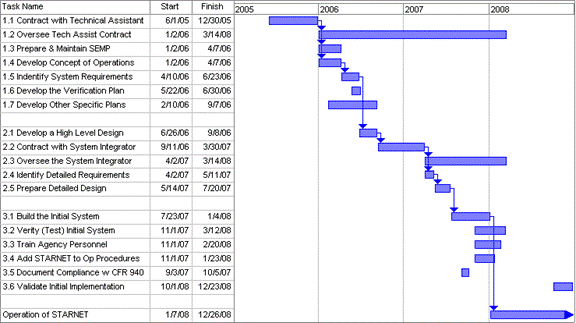Henry Gantt
by Andy Boyd
Today, we chart new territory. The University of Houston's College of Engineering presents this series about the machines that make our civilization run, and the people whose ingenuity created them.
Simple yet powerful ideas are reassuring, especially in a world that seems defined by complexity. It's much like the joke about a patient and his doctor. "Doctor," says the patient, "it hurts when I do this." The doctor responds, "Well then don't do that." Sometimes the answer's painlessly simple.
Henry Gantt is best known for a management tool that bears his name, the Gantt chart. Gantt lived at the turn of the twentieth century, a time when giant corporations were just emerging. Their size led to new management challenges. Gantt rose to the occasion by immersing himself in a growing movement called scientific management, also known as Taylorism. As the name suggests, the movement sought to treat management as a science.

Gantt recognized that large projects, say the construction of a building, were made up of many smaller tasks. Some tasks depended on the completion of others. Walls can't be put up until the foundation is poured. Other tasks were independent. Electricians needn't worry when the plumbers get their job done, and vice versa.
It's a pretty simple observation. But when a project gets large enough, keeping track of all the dependencies can be difficult. Project managers have to keep them straight. They can't have painters arriving before the wall board's up. Nor do they want the painters showing up months after the walls have been finished — the goal's to get the job done as quickly as possible.
Gantt charts display these dependencies pictorially. Each task is represented by a horizontal bar whose length corresponds to the time required to complete the task. Then the bars are laid out on a time line. Each bar is laid down as early as possible, but after all the tasks that must precede it.

The idea's so simple we're left to ask why it bears anyone's name. In part it's because Gantt was instrumental in bringing it to life. But more importantly, Gantt charts have proven to be really useful. They're studied in college and used by project managers around the world. Gantt charts have spawned more refined ways of managing large projects, but the original charts are still holding their own. Buy project management software and you can bet it works with Gantt charts.
Gantt's contributions to scientific management went far beyond a simple chart. He cared about worker incentives, proposing a means of pay he believed was fair to both labor and business. He also believed business had inherent obligations to society, not just to shareholders. The American Society of Mechanical Engineers' Gantt Medal is awarded for "distinguished achievement in management and for service to the community." But to generations of engineering students, Gantt's name is synonymous with a chart — a modest chart that makes complex projects just a little less complex.
I'm Andy Boyd at the University of Houston, where we're interested in the way inventive minds work.
Notes and references:
For related episodes, see TAYLORISM and FRANK AND LILLIEN MOLLER GILBRETH.
H. L. Gantt. Industrial Leadership. New York: Associated Press, 1921. Available through the Google Books Web site: https://books.google.com/.
H. L. Gantt. Work, Wages, and Profits. New York: The Engineering Magazine Company, 1916.
The Henry Laurence Gantt Medal. From the Web site of the American Society of Mechanical Engineers: http://www.asme.org/about-asme/honors-awards/achievement-awards/henry-laurence-gantt-medal. Accessed October 18, 2011.
The picture of Henry Gantt is in the public domain because the copyright has expired. The picture of the Gantt chart is from a U.S. Department of Transportation Web site.
This episode was first aired on November 10th, 2011.